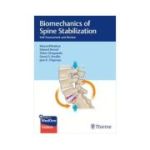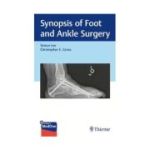Therapeutic Exercise for Musculoskeletal Injuries

Preț: 672,00 lei
Disponibilitate: nu mai face parte din ofertă
Autor: Peggy Houglum
ISBN: 9780736075954
Editura: Human Kinetics
Anul publicarii: 2010
Ediția: 3
Pagini: 1040
Categoria: ORTHOPEDICS
DESCRIERE
The third edition of Therapeutic Exercise for Musculoskeletal Injuries is the most comprehensive text available for understanding and applying therapeutic exercise techniques. Thoroughly updated, this major resource contains an extensive explanation of the science and application involved in developing safe therapeutic programs for the general population as well as individualized programs for specific clientele. With content specifically aligned with the National Athletic Trainers’ Association (NATA) accreditation standards, Therapeutic Exercise for Musculoskeletal Injuries is a key text for students preparing for the athletic trainers’ Board of Certification exam. In the text, respected clinician Peggy Houglum presents the most current evidence-based information regarding therapeutic exercise techniques. This information and Houglum’s knowledge gained from nearly 40 years of experience working in athletic training facilities, orthopedic physical therapy clinics, hospitals, and sports medicine clinics offer readers a valuable mix of research-based theory and experience-based clinical applications. One of six texts in the Athletic Training Education Series, the third edition of Therapeutic Exercise for Musculoskeletal Injuries assists readers’ understanding of the why, what, and when of therapeutic exercise techniques. Whereas other texts merely describe how to perform therapeutic exercise techniques, Houglum’s text details what occurs physiologically, why applications are important, and when treatments are effective. This approach encourages professionals to critically examine each patient’s situation and to develop programs to safely rehabilitate injured individuals. Building on the strengths of previous editions, this thoroughly updated third edition contains an increased emphasis on evidence-based approaches to the development of rehabilitation programs. Following are new additions and updates: * New chapters on joint replacement and age-group-specific rehabilitation principles * A more in-depth approach and emphasis on progressions from functional to activity-specific exercise * An enhanced focus on criteria for return to play * A detailed description of articular cartilage healing * Added information on rehabilitation of knee articular resurfacing * An expanded section on spine stabilization techniques * The most current knowledge and trends in care for common tendon pathology For ease of reading and quick reference, each of the exercise progressions and rehabilitation programs presented have been categorized and reformatted. Enhanced with over 900 photos and nearly 300 illustrations, Therapeutic Exercise for Musculoskeletal Injuries, Third Edition, stands alone as the most current and valuable reference for rehabilitation professionals. The third edition of Therapeutic Exercise for Musculoskeletal Injuries offers a range of learning aids to assist students of diverse learning styles. Chapter objectives, practical scenarios, key points, key terms, sidebars, critical thinking questions, and references will help students absorb, review, integrate, and apply the content. In addition, the text includes 177 lab activities for self-study or for completion in a laboratory setting. The labs ask students to perform techniques and exercises with a partner, make observations and measurements, and design programs for hypothetical patients. Lab activities are separated by chapter and include 5 to 10 exercises per chapter. For instructors, the text includes time-saving supplemental materials, such as a fully updated instructor guide, test bank, and presentation package plus image bank, accessible online at www. HumanKinetics. com/TherapeuticExerciseforMusculoskeletalInjuries. Therapeutic Exercise for Musculoskeletal Injuries, Third Edition, is a part of Human Kinetics’ Athletic Training Education Series. Featuring the work of respected authorities in athletic training, this collection of six outstanding textbooks, each with its own supporting instructional resources, parallels and expounds on the content areas in the accreditation standards of the NATA Education Council. To learn more about the books in this series, visit the Athletic Training Education Series Web site at www. HumanKinetics. com/AthleticTrainingEducationSeries.
Contents
Part I. Basic Concepts Chapter 1. Concepts of Rehabilitation The Rehabilitation Team Interacting With Team Members Qualities of Professionalism Components of a Rehabilitation Program Basic Components of Therapeutic Exercise Return-to-Competition Criteria Psychological Considerations Summary Learning Aids Chapter 2. Concepts of Healing Primary and Secondary Healing Healing Phases Growth Factors Healing of Specific Tissues Tensile Strength During Healing Factors That Affect Healing The Role of Therapeutic Exercise in Healing Summary Learning Aids Chapter 3. Concepts in Physics Force Newton’s Laws of Motion Center of Gravity Stability and Fixation Body Levers Levers and Force Physiological Muscle Advantages Other Concepts in Physics Summary Learning Aids Chapter 4. Examination and Assessment Examination: Making a Profile Assessment: Planning for Action Keeping Rehabilitation Records Summary Learning Aids Part II: Therapeutic Exercise Parameters and Techniques Chapter 5. Range of Motion and Flexibility Defining Flexibility and Range of Motion Connective-Tissue Composition Effects of Immobilization on Connective Tissue Effects of Remobilization on Connective Tissue Mechanical Properties and Tissue Behavior in Range of Motion Neuromuscular Influences on Range of Motion Determining Normal Range of Motion Measuring Range of Motion Terminology in Goniometry Stretching Techniques Exercise Progression Special Considerations Summary Learning Aids Chapter 6. Manual Therapy Techniques Critical Analysis Massage Myofascial Release Myofascial Trigger Points Muscle Energy Other Manual Therapies Joint Mobilization Neural Mobilization Summary Learning Aids Chapter 7. Muscle Strength and Endurance Muscle Structure and Function Neuromuscular Physiology Fast- and Slow-Twitch Fibers Muscle Strength, Power, and Endurance Force Production Types of Muscle Activity Open and Closed Kinetic Chain Activity Evaluating Muscle Strength Gradations of Muscle Activity Strength Equipment Proprioceptive Neuromuscular Facilitation Strengthening Principles Exercise Progression Summary Learning Aids Chapter 8. The ABCs of Proprioception Neurophysiology of Proprioception Central Nervous System Proprioceptor Sites Balance Coordination Agility Therapeutic Exercise for Proprioception Summary Learning Aids Chapter 9. Plyometrics Neuromuscular Principles Plyometric Production Plyometric Exercise Phases Preplyometric Considerations Plyometric Program Design Plyometric Program Considerations Precautions and Contraindications Equipment Lower-Extremity Plyometrics Upper-Extremity and Trunk Plyometrics Summary Learning Aids Chapter 10. Functional and Activity-Specific Exercise Definitions, Foundations, and Goals Contributions to Therapeutic Exercise Basic Functional Activities Activity-Specific Activities Functional to Activity-Specific Exercise Progression Precautions Final Evaluation A Lower-Extremity Functional and Activity-Specific Progression An Upper-Extremity Functional and Activity-Specific Progression Returning the Patient to Full Participation Summary Learning Aids Part III: General Therapeutic Exercise Applications Chapter 11. Posture and Body Mechanics Posture Muscle Imbalances Body Mechanics Body-Awareness Programs Summary Learning Aids Chapter 12. Ambulation and Ambulation Aids Normal Gait Gait Analysis Pathological Gait Normal Running Gait Mechanics of Ambulation with Assistive Devices Summary Learning Aids Chapter 13. Aquatic Therapeutic Exercise Physical Properties and Principles of Water Equipment Indications, Advantages, Precautions, and Contraindications Aquatic Therapeutic Exercise Principles and Guidelines Deep-Water Exercise Aquatic Therapeutic Exercises Summary Learning Aids Chapter 14. Swiss Balls and Foam Rollers Swiss Balls Swiss-Ball Exercises Foam Rollers Foam-Roller Exercises Summary Learning Aids Chapter 15. Therapeutic Exercise for Tendinopathy Terminology Tendon Structure Etiology Tendon Response General Treatment Specific Treatment Examples of Tendinopathy Cases Summary Learning Aids Chapter 16. Therapeutic Exercise for Joint Replacement History Indications for Joint Replacement Surgical Procedures Special Rehabilitation Considerations Summary Learning Aids Chapter 17. Age Considerations in Therapeutic Exercise Stages of Life, Activity Levels, and Health Care Pediatric Considerations Geriatric Considerations Summary Learning Aids Part IV: Specific Applications Chapter 18. Spine and Sacroiliac General Rehabilitation Considerations Rehabilitation Techniques Special Rehabilitation Applications Summary Learning Aids Chapter 19. Shoulder and Arm Mechanics of Overhead Sport Activities General Rehabilitation Considerations Rehabilitation Techniques Flexibility Exercises Strengthening Exercises Stabilization Exercises Plyometric Exercises Functional and Activity-Specific Exercises Special Rehabilitation Applications Summary Learning Aids Chapter 20. Elbow and Forearm General Rehabilitation Considerations Rehabilitation Techniques Joint Mobilization Flexibility Exercises Strengthening Exercises Functional and Activity-Specific Exercises Special Rehabilitation Applications Summary Learning Aids Chapter 21. Wrist and Hand General Rehabilitation Considerations Soft-Tissue Mobilization Joint Mobilization Flexibility Exercises Strengthening Exercises Plyometric Exercises Functional and Activity-Specific Exercises Special Rehabilitation Applications Summary Learning Aids Chapter 22. Foot, Ankle, and Leg General Rehabilitation Considerations Common Structural Deformities Orthotic Treatment for Foot Deformities Determining Proper Footwear for Patients Soft-Tissue Mobilization Deep-Tissue Massage Joint Mobilization Flexibility Exercises Strengthening Exercises Proprioception Exercises Functional and Activity-Specific Exercises Special Rehabilitation Applications Summary Learning Aids Chapter 23. Knee and Thigh General Rehabilitation Considerations Soft-Tissue Mobilization Joint Mobilization Flexibility Exercises Strengthening Exercises Proprioception Exercises Functional and Activity-Specific Exercises Special Rehabilitation Applications Summary Learning Aids Chapter 24. Hip General Rehabilitation Considerations Soft-Tissue Mobilization Joint Mobilization Flexibility Exercises Strengthening Exercises Proprioception Exercises Functional and Activity-Specific Exercises Special Rehabilitation Applications Summary Learning Aids
Categorii de carte
-Comandă specială
-Edituri
-Promo
-Publicaţii Callisto
-Cărţi noi
-- 2551,50 leiPRP: 2835,00 lei
- 3024,00 leiPRP: 3360,00 lei
- 2956,80 leiPRP: 3360,00 lei
Promoţii
-- 2551,50 leiPRP: 2835,00 lei
- 3024,00 leiPRP: 3360,00 lei
- 2956,80 leiPRP: 3360,00 lei











REVIEW-URI